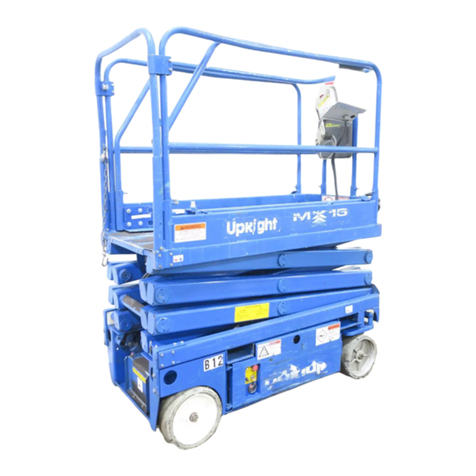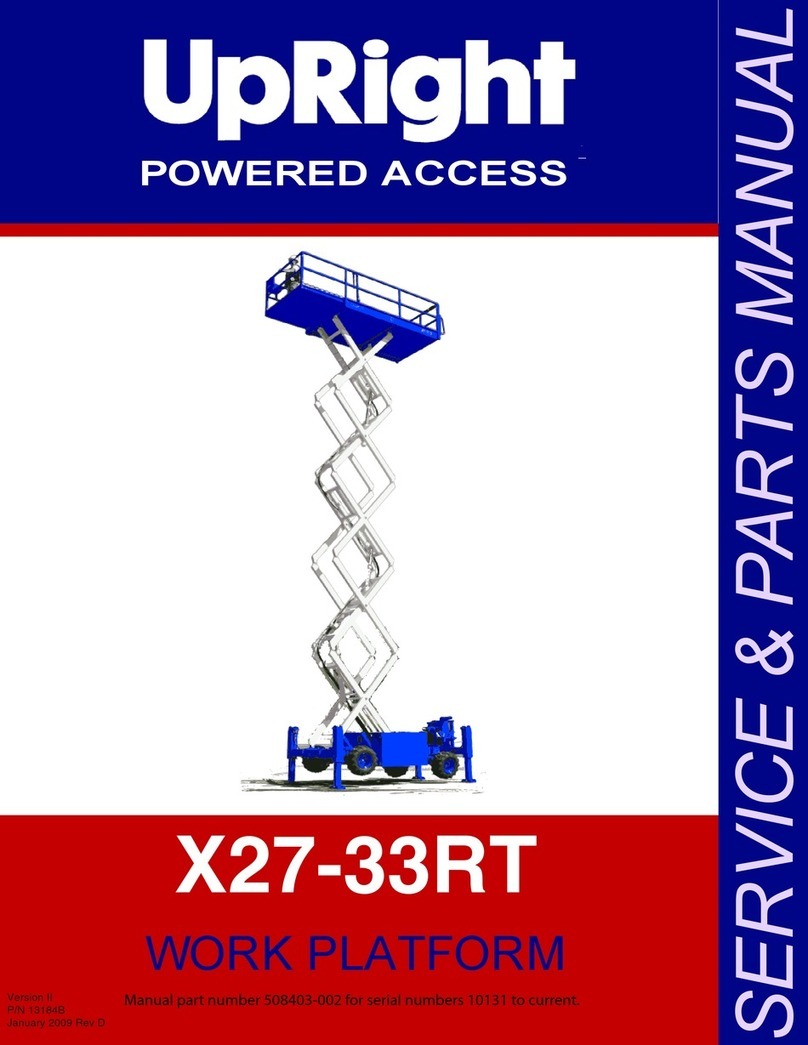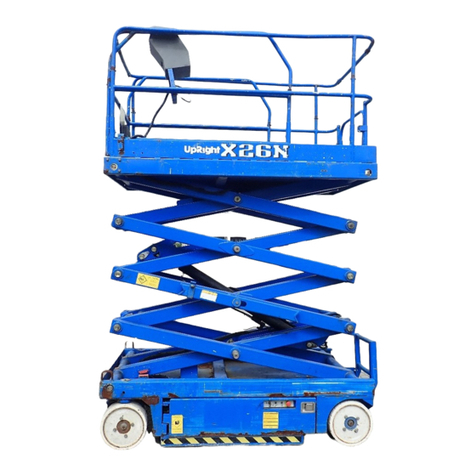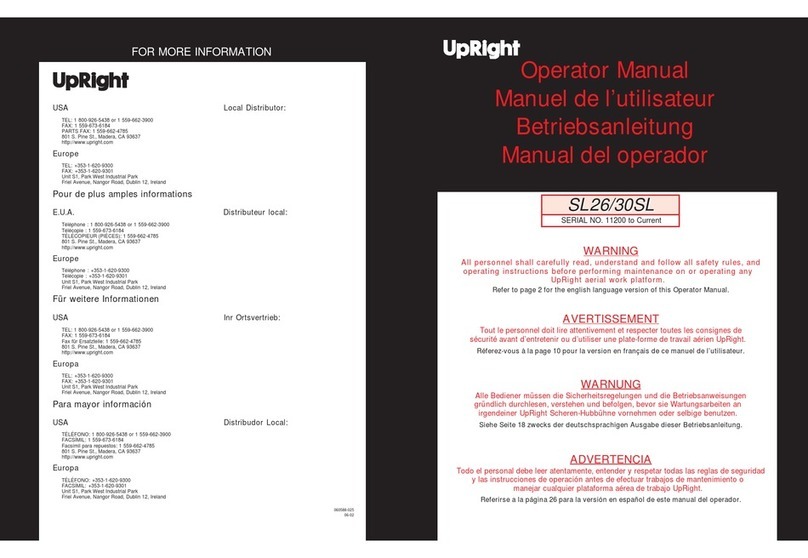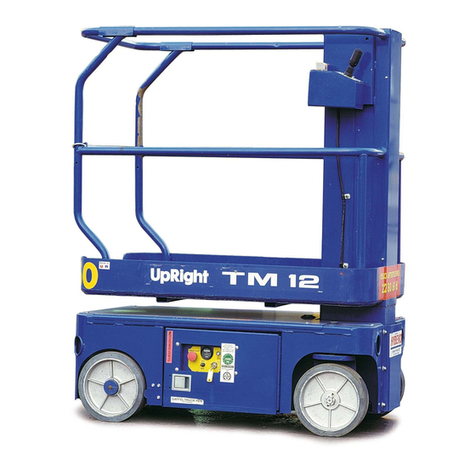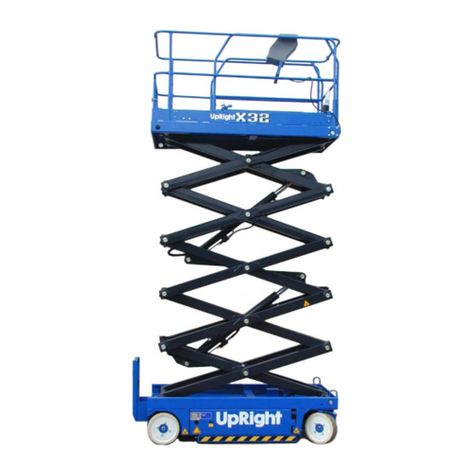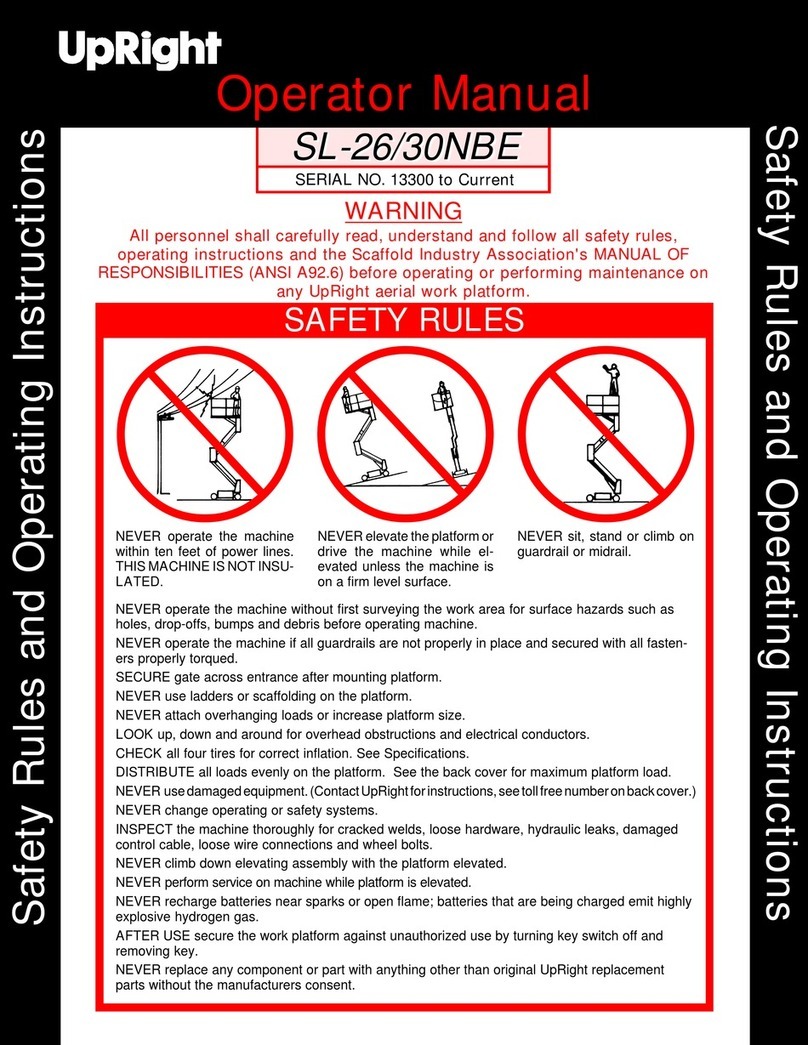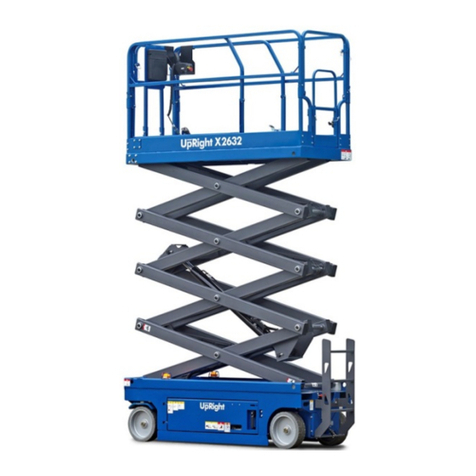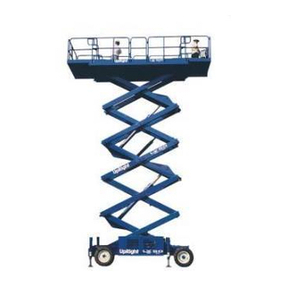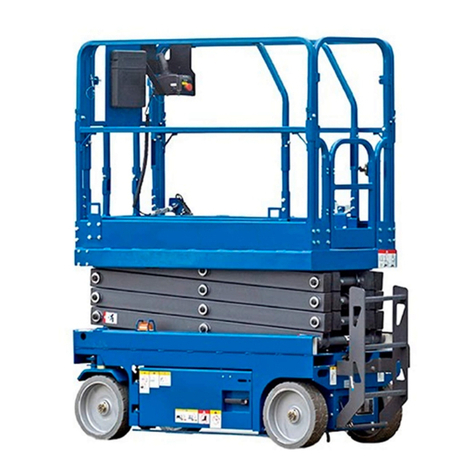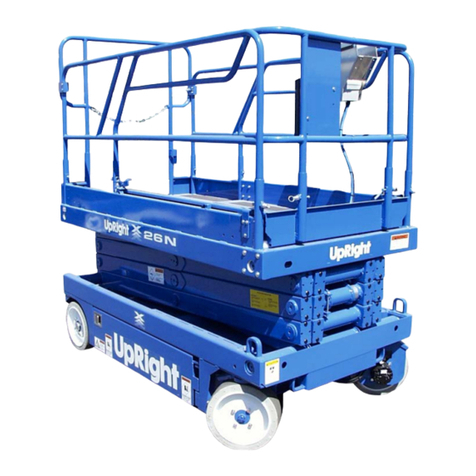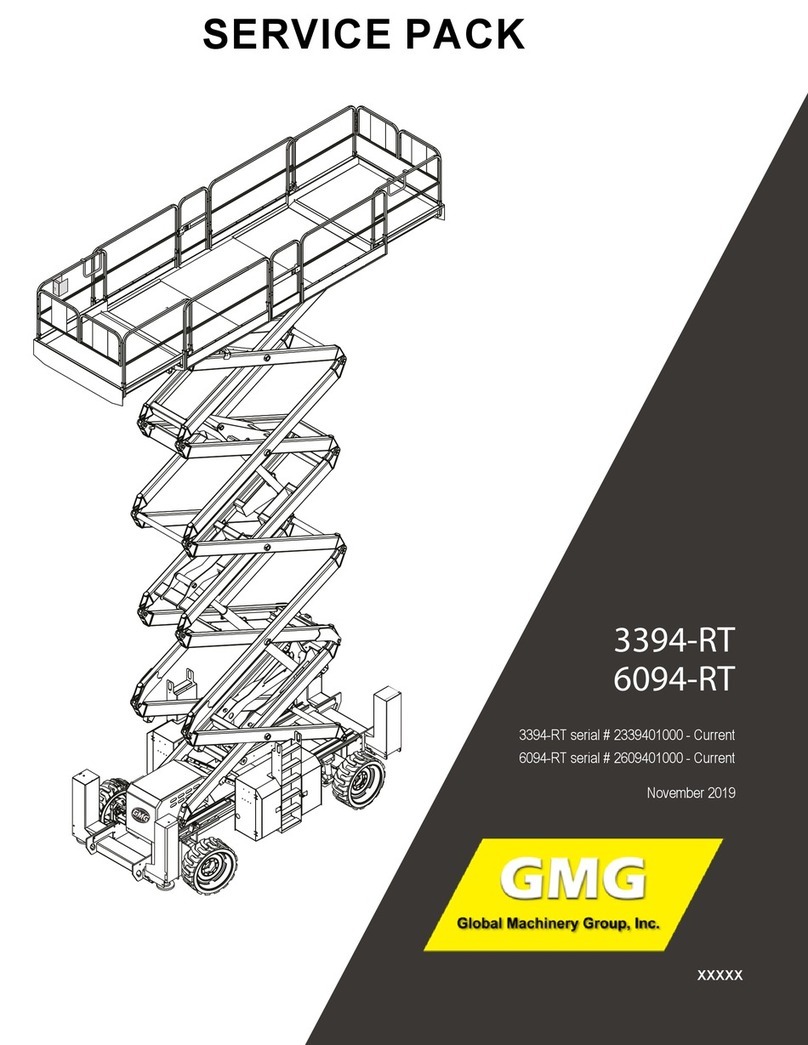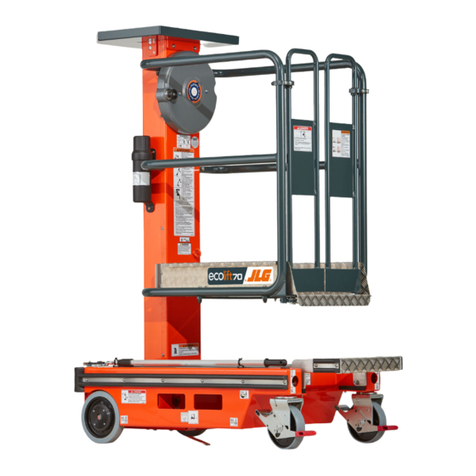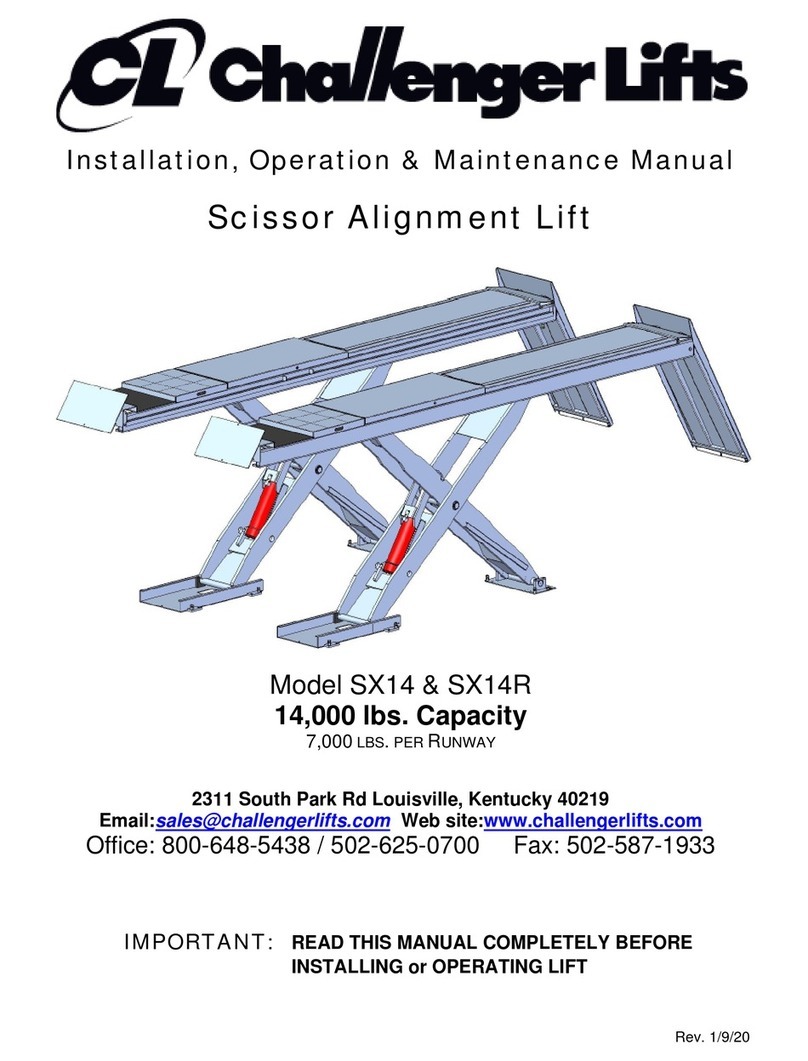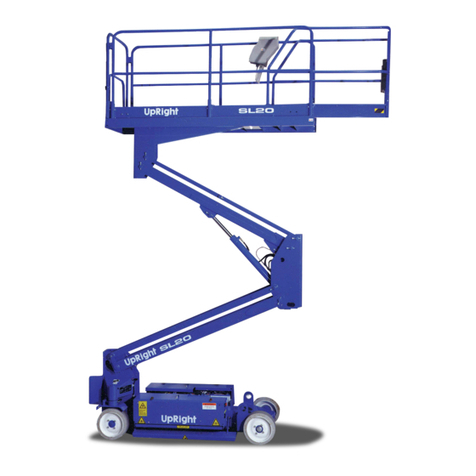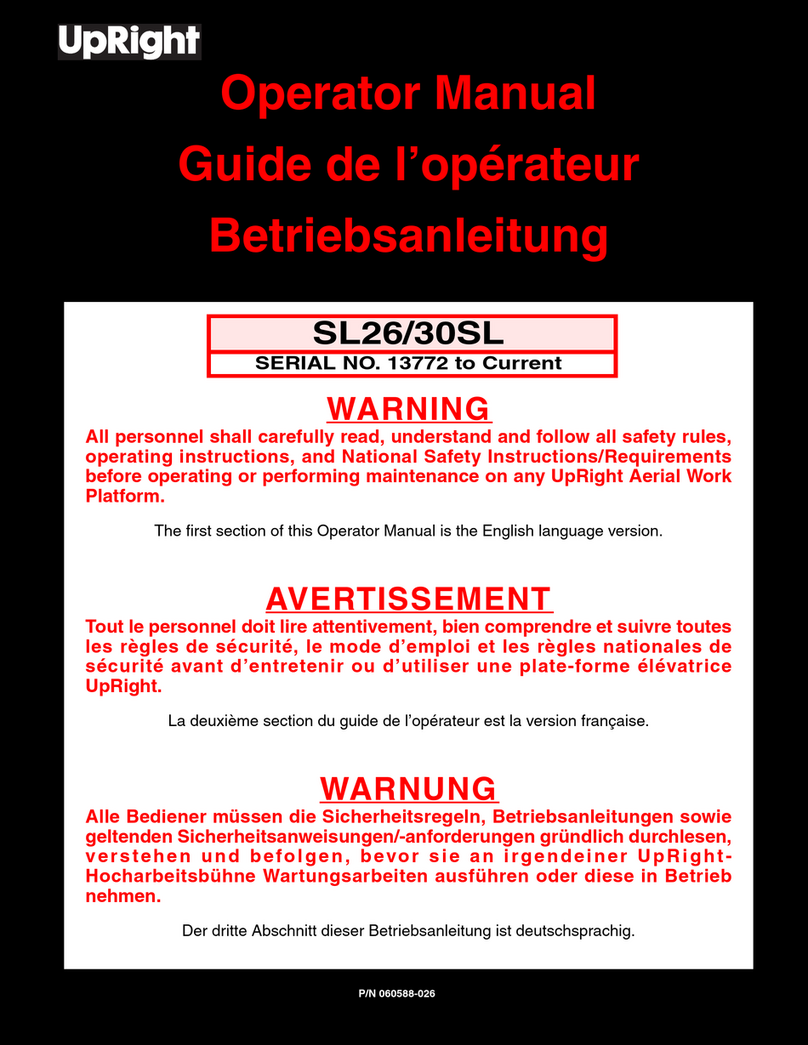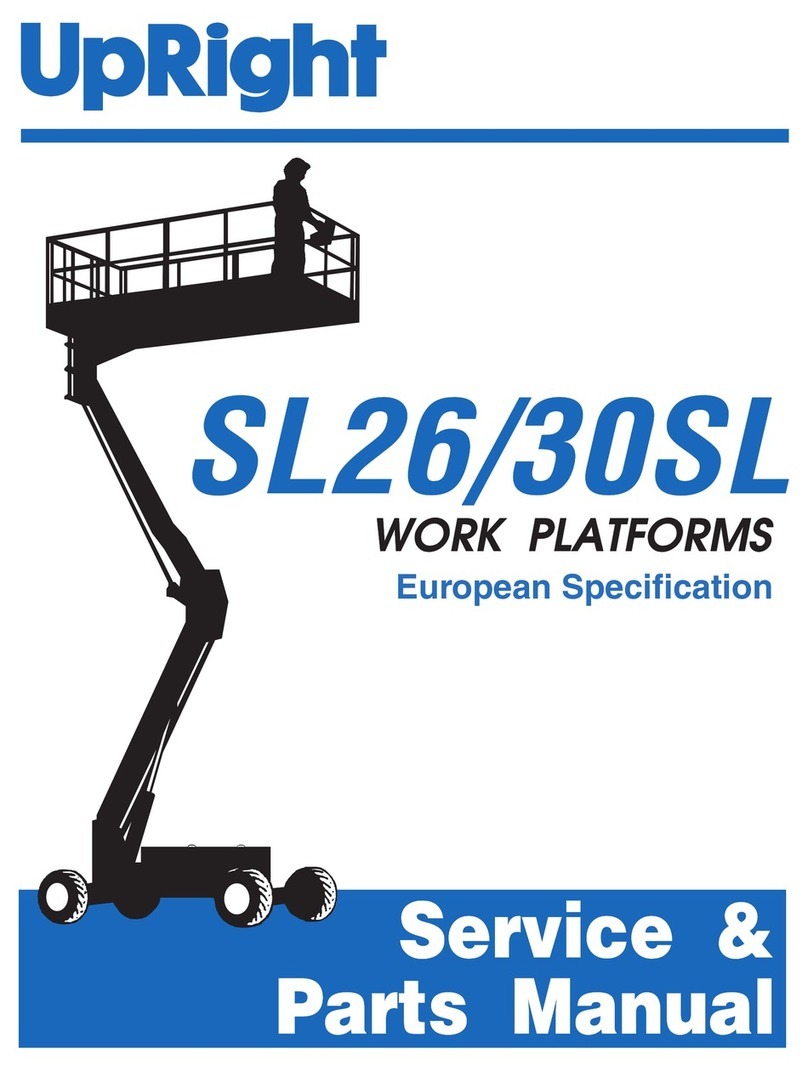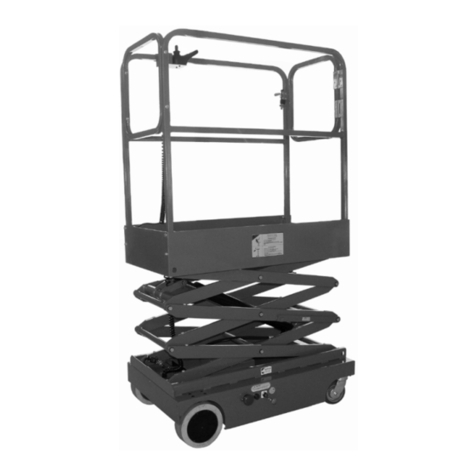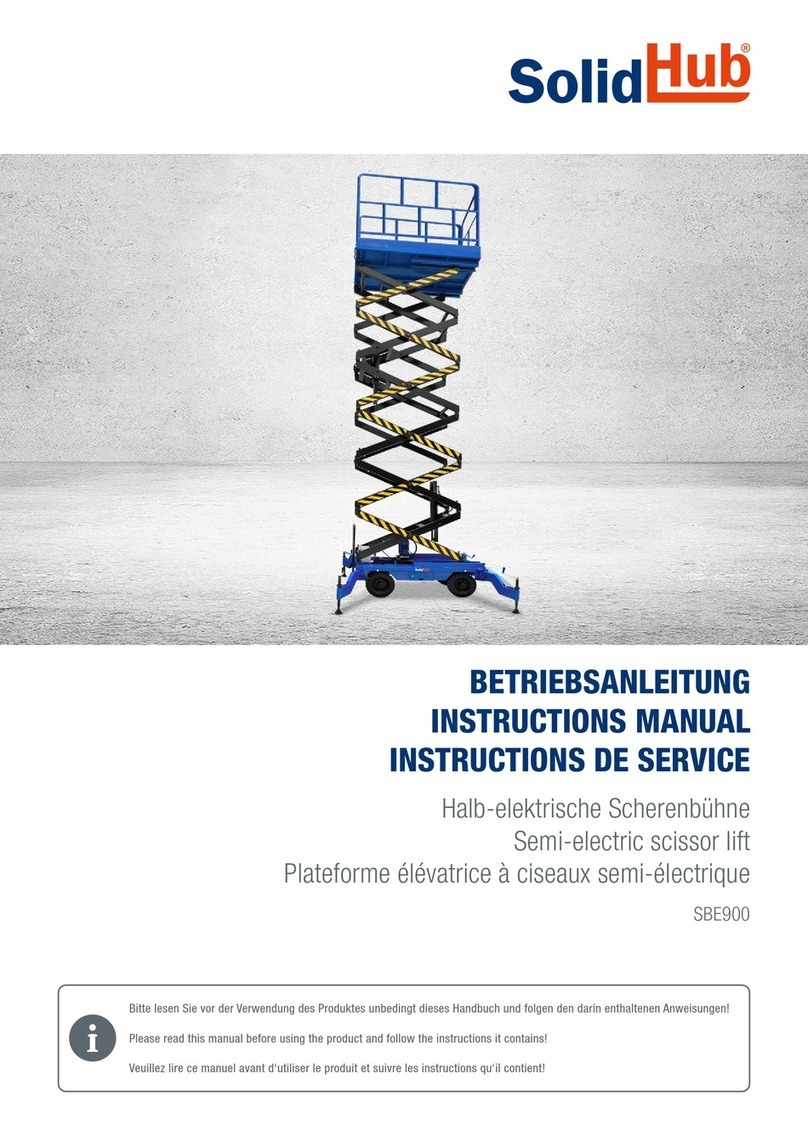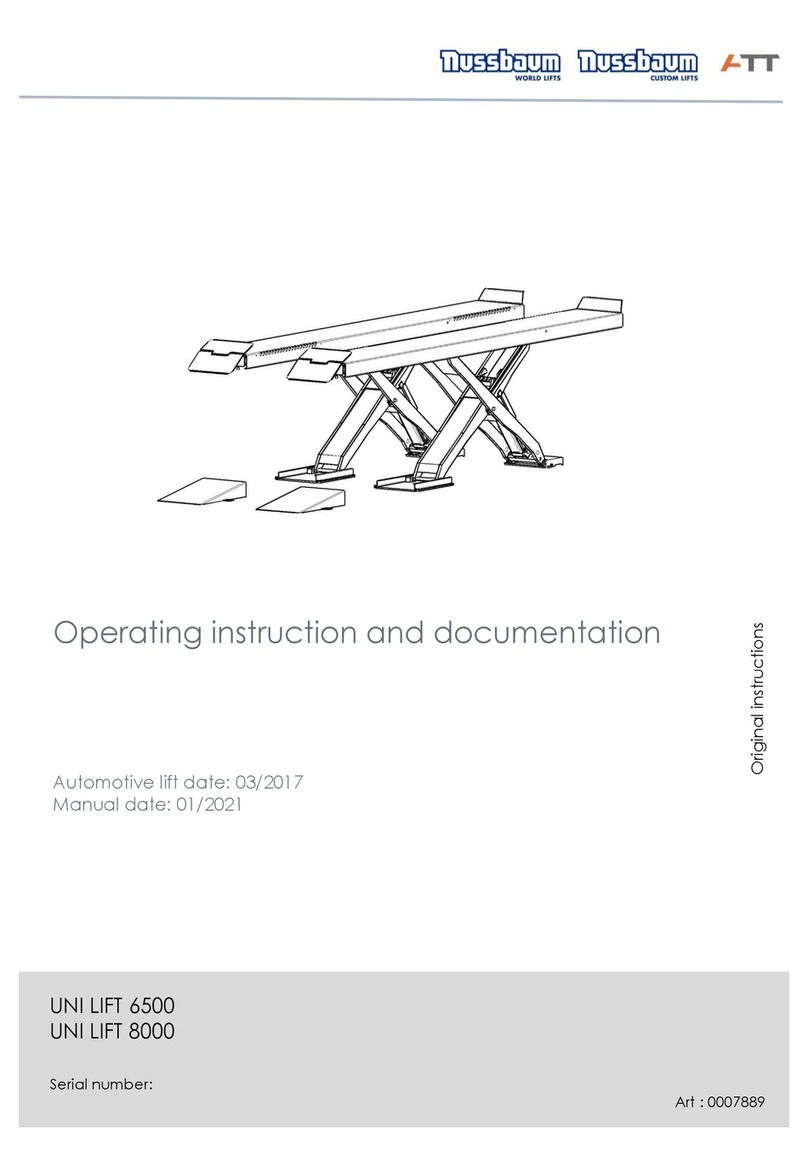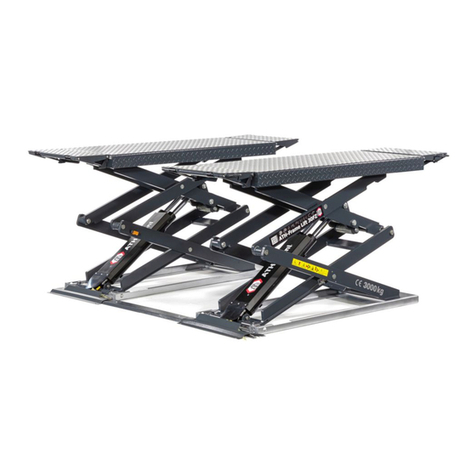
Page 4 TM12 Work Platform
Before operating the work platform, ensure that the pre-operation safety inspection has been
completed and that any deficiencies have been corrected. Never operate a damaged or mal-
functioning machine. The operator must be thoroughly trained on this machine, and must read,
fully understand, and follow this Operator Manual and Scaffold Industry Association’s Manual of
Responsibilities of ANSI A92.6-1999.
TRAVEL WITH PLATFORM LOWERED
1. Check that route is clear of obstacles (persons, obstructions, holes, drop-offs, bumps and
debris), is level, and is capable of supporting the wheel loads.
2. Verify that the Chassis Key Switch is turned to DECK and that Chassis Emergency Stop
Switch is on (pulled out).
3. Mount the platform and properly close the entrance.
4. Check clearances above, below and to the sides of the platform.
5. Pull the Platform Emergency Stop Button out to the ON position.
6. Turn the Drive/Lift Switch to DRIVE.
7. Engage the Interlock Switch and move the Control Handle to FORWARD or REVERSE to
travel in the desired direction. The speed of the machine will vary depending on how far from
center the Control Handle is moved.
STEERING
1. Turn the Drive/Lift Switch to DRIVE.
2. While engaging the Interlock Switch, push the Steering Switch to RIGHT or LEFT to turn
wheels in the desired direction. Observe the tires while operating the machine to ensure
proper direction.
NOTE: Steering is not self-centering. Wheels must be returned to the straight ahead
position by operating the Steering Switch.
ELEVATING PLATFORM
1. Select a firm, level surface.
2. Turn the Drive/Lift Switch to Lift.
3. While engaging the Interlock Switch, push the Control Handle forward.
4. If the machine is not level the tilt alarm will sound and the machine will not lift or drive. If the tilt
alarm sounds the platform must be lowered and the machine moved to a firm level sur-
face before attempting to re-elevate the Platform.
NOTE: Depression supports will deploy automatically as the platform elevates and will
retract after the platform has been lowered completely and has been driven.
TRAVEL WITH PLATFORM ELEVATED
NOTE: The machine will travel at reduced speed when platform is elevated.
1. Check that route is clear of obstacles (persons, obstructions, holes, drop-offs, bumps and
debris), is level, and is capable of supporting the wheel loads.
2. Check clearances above, below and to the sides of platform.
3. Turn the Drive/Lift Switch to DRIVE.
4. Engage the Interlock Switch, and move the Control Handle to FORWARD or REVERSE to
travel in the desired direction. The speed of the machine will vary depending on how far from
center the Control Handle is moved.
5. If the machine is not level the tilt alarm will sound and the machine will not lift or drive. If the tilt
alarm sounds the platform must be lowered and the machine moved to a firm level sur-
face before attempting to re-elevate the Platform.
OPERATION

